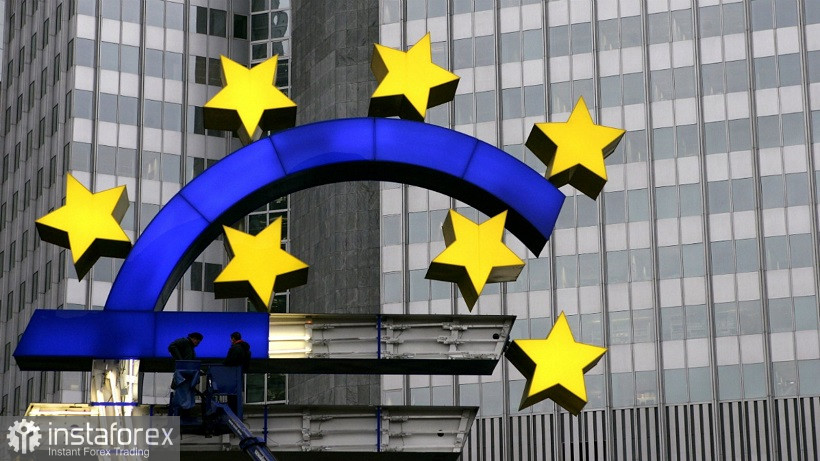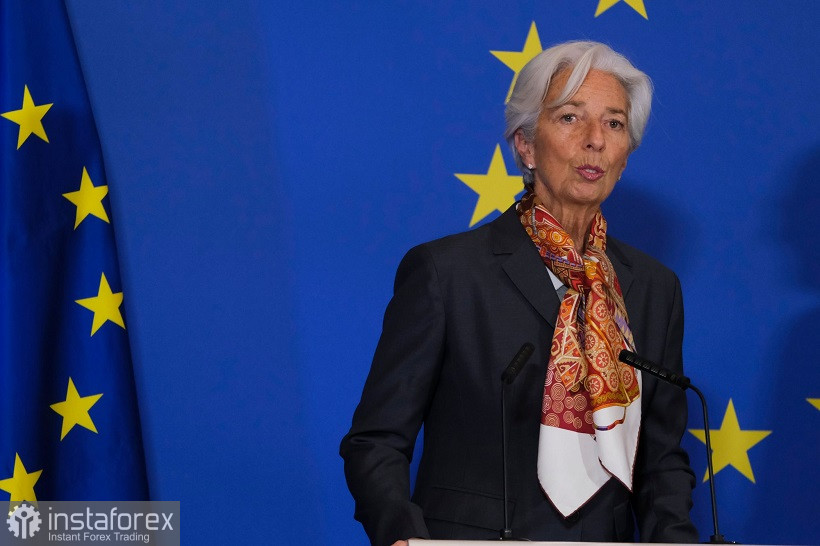Euro-dollar bulls continue to build a fragile structure of corrective growth, which is primarily based on the weakening of the greenback, and secondly on the strengthening of price pressure in the eurozone. Today's report only added fuel to the fire, allowing EUR/USD bulls to enter the area of the 13th figure. As they say, "a good spoon for lunch": the inflation release turned out to be very useful, given the proximity of the February meeting of the European Central Bank. On the eve of this event, the euro is in high demand, due to the growth of hawkish expectations. However, it is this factor that may eventually ruin the single currency if ECB President Christine Lagarde does not tighten her rhetoric and remains true to the accommodative monetary exchange rate. The denouement of this twisted plot will come very soon - literally tomorrow, the euro will either receive additional support from the ECB, or go into a knockdown. It is difficult to imagine a third option, in which the single currency will remain in the same positions.

To talk about the prospects of the EUR/USD pair, it is necessary to say a few words about the background of the current ascent. Against the background of the general weakening of the US currency (due to the craving for risky assets), the euro has significantly strengthened its position this week. It all started with German inflation. And although de facto inflation in Germany slowed down its growth, the main indicators came out in the green zone, that is, better than expected. The overall consumer price index in annual terms came out at 4.9%, whereas in the previous month (December) it was at 5.7%. The indicator slowed its growth for the first time after a 6-month consecutive ascent. The harmonized CPI showed similar dynamics (although in this case the indicator has been declining for the second consecutive month): after reaching a 6 percent peak in November, it turned around and gradually goes down: it came out at 5.7% in December, in January - at 5.1%.
But despite the actual slowdown in German inflation, the opinion has taken root in the market that pan-European inflation will also come out in a "green color". The most interesting thing in this situation is that these assumptions were confirmed: the pan-European release really turned out to be stronger than the forecast values. European inflation has jumped up again, reaching another historic high. Thus, the overall consumer price index was at 5.1% in January (after rising to 5.0% in December). Experts expected to see the indicator slightly lower, at 4.4%. In this case, the CPI growth would show the first signs of slowing down – for the first time in the last seven months. But instead, the indicator has once again updated the historical record. The core index, excluding energy and food prices, rose to 2.3%, with a forecast decline to 1.8%. Core inflation did slow down its growth a little, but it still remained at high values.
Considering the structure of today's release, we can conclude that the positive dynamics of the overall CPI was mainly due to energy carriers, the cost of which increased to 28.6% (in December, this component increased to 26%). Food prices have also risen significantly (an increase of 5.2% after the December growth of 4.7%). Prices have increased most strongly in the Baltic countries (especially in Lithuania and Estonia) and Belgium. Inflation moved up the weakest, oddly enough, in France.
After today's release, the hawkish voices sounded stronger and stronger. Market participants have not forgotten the minutes of the December ECB meeting, where five members of the council insisted on tightening the parameters of monetary policy. Another record increase in the overall CPI may lead to a strengthening of the hawk wing of the ECB. At least, many currency strategists now allow the ECB to raise the rate by at least 10 basis points already in July, whereas earlier September was most often mentioned in this context. At the same time, the leadership of the ECB and key central bank officials have repeatedly denied the likelihood of tightening monetary policy, pointing to the temporary nature of inflationary growth. And it is likely that tomorrow the ECB will keep the dovish rhetoric contrary to the opposite expectations of most traders.

Therefore, despite the "hawkish fanfare" that is now sounding from every corner, it is still risky to open long positions for the EUR/USD pair. The ECB can justify its soft position, in particular, by the fact that prices have slowed down in the two largest economies of the eurozone (namely Germany and France) - even against the background of expensive energy resources and logistical problems. The ECB can also take into account the fact that core inflation has reached its "ceiling": the core consumer price index showed consistent growth from August to November 2021. It came out at the level of 2.6% in November and December, and finally retreated to 2.3% in January. The indicator showed signs of slowing down for the first time in five months.
Thus, it is impractical and risky to open any trading positions at the moment: both in favor of the euro and against the single currency. On one side of the scale is an unprecedented increase in overall inflation in the eurozone, on the other side of the scale is the ECB's confidence that this growth is temporary. In conditions of such uncertainty, it is best to stay out of the market – at least after the end of the press conference of the head of the ECB.
 English
English 
 Русский
Русский Bahasa Indonesia
Bahasa Indonesia Bahasa Malay
Bahasa Malay ไทย
ไทย Español
Español Deutsch
Deutsch Български
Български Français
Français Tiếng Việt
Tiếng Việt 中文
中文 বাংলা
বাংলা हिन्दी
हिन्दी Čeština
Čeština Українська
Українська Română
Română

